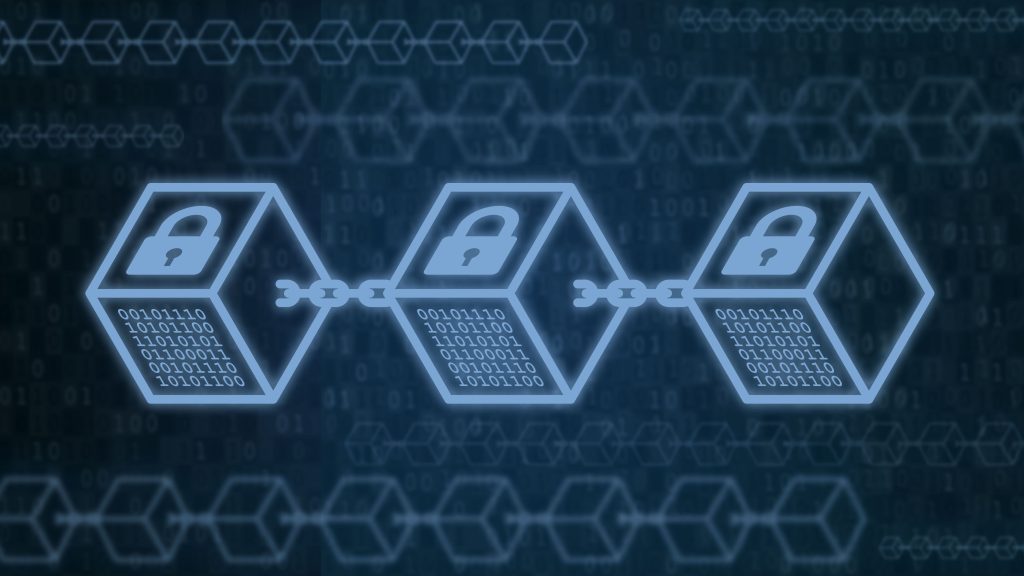Digital identity management has become an increasingly important issue in our interconnected world. With the rise of online services and digital interactions, the need for secure, verifiable, and privacy-respecting identity systems has never been greater. Traditional identity management systems rely on centralized authorities, such as government bodies, financial institutions, or social platforms, to verify and authenticate users. However, these systems are often prone to security breaches, fraud, and privacy violations.
Blockchain technology, with its inherent features of decentralization, immutability, and transparency, offers a revolutionary solution to these issues. By leveraging blockchain, digital identities can be made more secure, user-controlled, and verifiable without relying on centralized intermediaries. This article explores how blockchain is transforming digital identity management and its potential to reshape online authentication and privacy protection.
1. The Need for Secure Digital Identity
1.1 The Current State of Digital Identity Management
In today’s digital landscape, individuals are required to authenticate their identity on various platforms, from social media accounts and banking apps to e-commerce websites and government portals. Traditional identity management systems typically involve storing sensitive personal information in centralized databases controlled by corporations or governmental agencies. These systems are vulnerable to hacking, data breaches, and identity theft, as evidenced by several high-profile cases in recent years.
Moreover, many users are increasingly concerned about the lack of control over their personal data. Centralized platforms often collect and store vast amounts of personal information, raising privacy concerns. Users typically have little choice in how their data is used, stored, or shared, which has led to a growing demand for more privacy-conscious and user-controlled alternatives.
1.2 The Case for Blockchain in Digital Identity
Blockchain technology, with its decentralized nature, offers a promising alternative to the centralized models of identity management. Unlike traditional systems where a single authority controls the data, blockchain allows users to retain ownership of their identity and personal information. Blockchain’s core principles of transparency, security, and immutability make it an ideal platform for creating verifiable, tamper-proof digital identities.
2. How Blockchain Works for Digital Identity
2.1 Decentralized Identity (Self-Sovereign Identity)
Self-Sovereign Identity (SSI) is a concept in which individuals have complete control over their digital identities. Unlike traditional systems, where users’ identities are managed by third parties, SSI allows individuals to own, manage, and share their identity information in a decentralized manner. Blockchain technology enables this by providing a secure and immutable ledger that records and verifies identity-related transactions.
In a blockchain-based identity system, users store their identity information in a digital wallet and have the ability to selectively share pieces of this information with trusted parties, without revealing unnecessary details. For example, instead of providing a full name, date of birth, and address when verifying age for a service, a user can share only the information required to prove they are over 18, all without compromising privacy.
2.2 Key Features of Blockchain in Digital Identity
- Decentralization: Blockchain eliminates the need for a central authority. Identity data is not stored in one central database but is distributed across a network of nodes. This decentralization increases security and reduces the risk of hacking or data breaches.
- Immutability: Once data is recorded on the blockchain, it cannot be altered or deleted. This ensures the integrity and authenticity of identity information, making it tamper-proof.
- Transparency and Traceability: Blockchain allows for transparent, auditable records of transactions, enabling users and organizations to verify identities without compromising privacy.
- Privacy and User Control: Blockchain enables users to retain control over their data. They can share only specific aspects of their identity and revoke access when necessary, allowing for more granular privacy controls.
3. Blockchain Applications in Digital Identity
3.1 Digital Identity Verification
Blockchain can streamline digital identity verification by enabling trusted, verifiable claims about an individual. This could include claims about a person’s age, nationality, employment status, or education. Organizations can verify these claims without needing to directly access sensitive personal data.
For example, a user might present a blockchain-based credential, such as a verifiable degree or a certified professional qualification, when applying for a job. The employer can verify the authenticity of the credentials by querying the blockchain, without ever needing to contact the institution that issued the certificate.
- Example: uPort, a blockchain-based platform, enables users to manage and verify their identities in a self-sovereign way. It allows users to store personal credentials (e.g., driver’s licenses, passports) in a secure digital wallet and share them with trusted parties as needed.
3.2 Single Sign-On (SSO) and Authentication
Blockchain can also facilitate single sign-on (SSO) for users across multiple platforms, enhancing convenience and security. Instead of managing dozens of different usernames and passwords, users can authenticate themselves using a single blockchain-based identity. This identity can be linked to multiple online services, allowing users to log in securely without having to remember complex passwords.
- Example: Civic is a blockchain-based identity verification platform that allows users to control and verify their identity for access to various online services. Through Civic’s SSO feature, users can log into supported services using their verified blockchain identity, eliminating the need for traditional login credentials.
3.3 Secure Voting Systems
Blockchain’s use in identity management extends to secure voting systems, which are particularly relevant in political elections and corporate governance. Blockchain can enable the creation of digital identities for voters, ensuring that only eligible individuals can vote and that their votes are securely recorded and anonymized. The transparency of blockchain ensures that the election process is auditable and tamper-proof.
- Example: Estonia’s e-Residency program allows citizens and residents to digitally authenticate their identity for government services. The technology behind this program is based on blockchain, ensuring secure, transparent, and traceable digital identities for e-governance.

4. Benefits of Blockchain-Based Digital Identity Management
4.1 Enhanced Security
Blockchain provides a high level of security compared to traditional identity management systems. Since the blockchain is decentralized, there is no central point of failure that can be exploited by cybercriminals. Moreover, because blockchain uses advanced cryptography, identity data is encrypted, ensuring that unauthorized parties cannot access it.
4.2 Improved Privacy and Control
Blockchain-based digital identity management empowers individuals to have more control over their personal information. Users can share specific pieces of their identity, such as age or location, without revealing other sensitive data. Additionally, users can revoke access to their identity at any time, providing greater privacy and autonomy.
4.3 Fraud Prevention
Blockchain’s immutability and transparency help prevent fraud and identity theft. Since identity data cannot be altered once it’s recorded on the blockchain, fraudulent attempts to change or fabricate identity information are virtually impossible. This helps reduce the risk of identity theft and ensures that identity-related claims are legitimate.
4.4 Lower Costs and Increased Efficiency
Blockchain-based identity management systems can lower operational costs for businesses and organizations. By eliminating the need for intermediaries, such as banks or third-party identity verification services, blockchain can streamline the process of verifying and managing digital identities. Additionally, the automation provided by smart contracts reduces administrative overhead.
5. Challenges and Limitations of Blockchain in Digital Identity
5.1 Scalability
One of the challenges of implementing blockchain for digital identity management is scalability. Public blockchains, such as Ethereum, can experience network congestion, leading to slow transaction times and higher costs. To address this issue, new blockchain solutions, such as Layer 2 scaling solutions, are being developed to improve the scalability of blockchain networks.
5.2 Regulatory and Legal Challenges
The use of blockchain in digital identity management raises various legal and regulatory issues. For example, issues around data privacy, the General Data Protection Regulation (GDPR) in Europe, and the management of sensitive personal data need to be carefully considered. Since blockchain is immutable, it may conflict with laws that require the ability to delete or alter personal data.
5.3 Adoption and Interoperability
For blockchain-based digital identities to be truly effective, they need to be widely adopted by businesses, governments, and users. Interoperability between different blockchain platforms is also crucial to ensure that digital identities can be verified and used across a wide range of services and applications.
6. The Future of Blockchain in Digital Identity
Blockchain technology has the potential to fundamentally transform the way we manage and verify our identities in the digital world. As blockchain platforms continue to evolve and scale, they are likely to become a core part of digital identity solutions. In the future, we could see widespread adoption of self-sovereign identities, where users have complete control over their digital personas, and identity management becomes more secure, private, and efficient.
Furthermore, blockchain’s role in enabling secure voting, borderless digital services, and transparent record-keeping for government and enterprise applications will pave the way for a more decentralized and user-centric digital economy.
Conclusion
Blockchain technology represents a paradigm shift in digital identity management. By providing a secure, decentralized, and user-controlled framework, blockchain empowers individuals to manage their identities in a more private and transparent way. While challenges such as scalability, regulatory issues, and adoption remain, the potential benefits of blockchain in digital identity management are immense. As technology and adoption evolve, blockchain could be the cornerstone of a new era of digital identity that is secure, efficient, and most importantly, under the control of the individual.
This article provides a comprehensive overview of how blockchain is revolutionizing digital identity management, offering a detailed explanation of its core principles, applications, benefits, and challenges. If you need further elaboration on any section or specific examples, feel free to ask!

















































